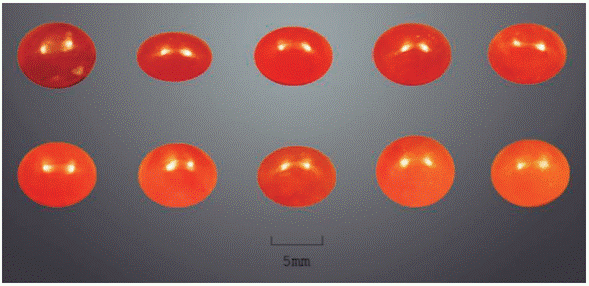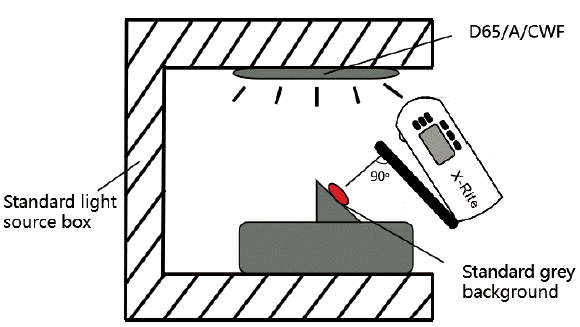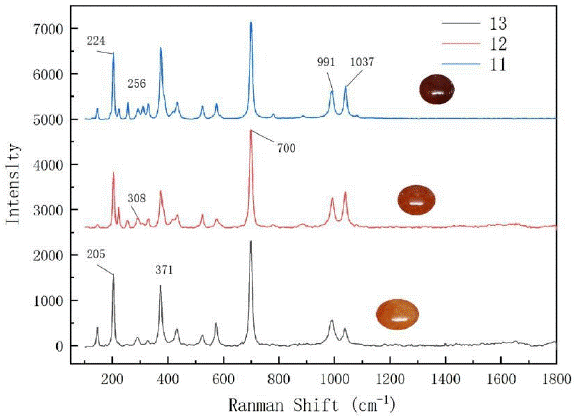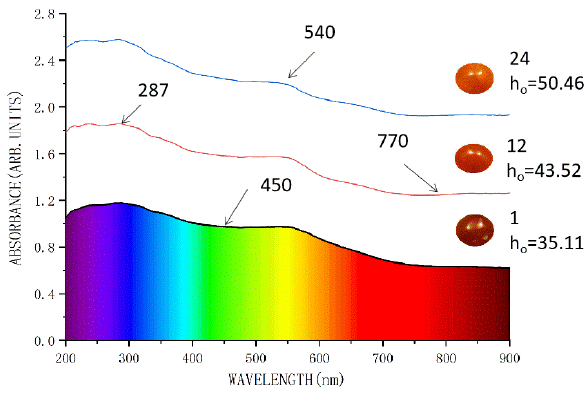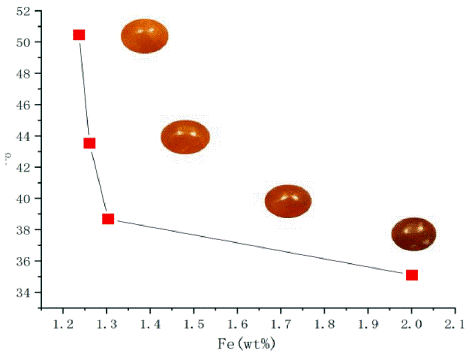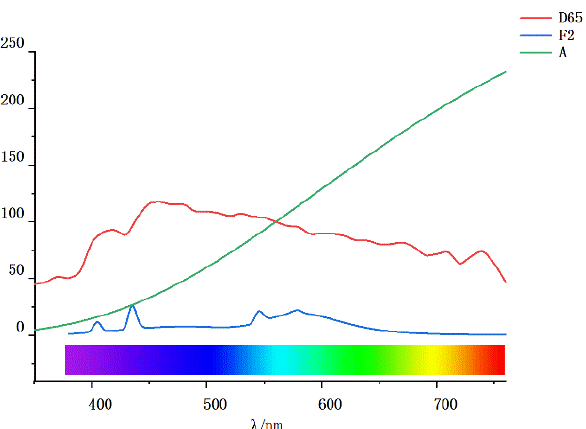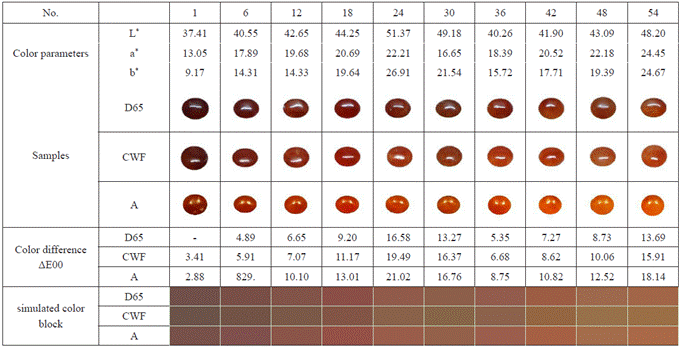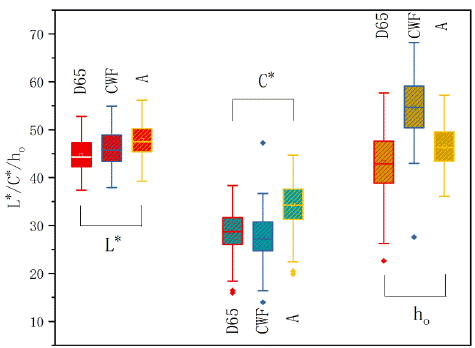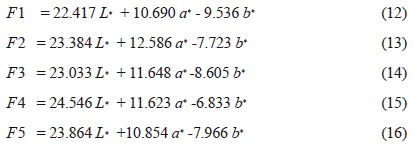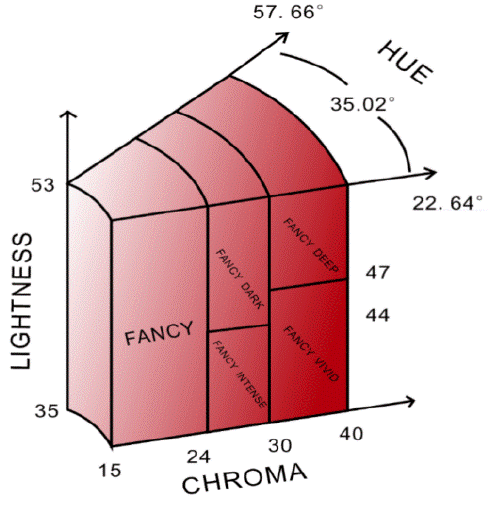Introduction
Jadeite is generally considered to be a high-pressure mineral (Yang, Yang & Long, 2015), which is called the "King of Jade" in China. It generally occurs as block, and is a rare rock type formed in subduction zones with two origins: the wholesale metasomatic replacement and the vein precipitation (Yui & Fukuyama, 2015; Mevel & Kiénast, 1986). Based on possible formation models, here we propose to classify jadeite into two types: fluid precipitates (P-type) and metasomatic replacement (R-type) (Tsujimori & Harlow, 2012).
Geologically, jadeite is a fibrous mineral aggregate composed of pyroxene minerals with jadeite and omphacite as the main minerals. It typically has different percentages of diopside (CaMgSi2O6)/ kosmochlor (NaCrSi2O6 ), iron-rich pyroxene (CaFe2 + Si2O6) and aegirine (NaFe3 + Si2O6 ), which coexist with jadeite as solid solutions (Harlow & Olds, 1987).
To petrologically define the jadeite, the jadeite pyroxene content in rock must reach 90-95%, or it may be too rigidity to be defined as jadeite-rich rock. Beside basic mineral composition, the composition of jadeite varies with place of origin, e.g., jadeite from the Burma contains soda amphibole (including ekman rutile, blue amphibole, sodium tremolite and amphibole), albite, zeolite, tremolite, rutile, clinochlore, barium albite and chromite, etc (Htein & Naing, 1994, 1995).
Jadeite, a polycrystalline heterochromatic jadeite, is transparent and colorless when purified, which usually white due to the scattering of cracks, tiny grain boundary edges and fluid inclusions. The color of jadeite can be divided into primary one and secondary one. The crystal field theory shows that the color mechanism of jadeite is mainly composed of the following two forms: (1) metamorphic differentiation: the color-causing trace elements such as Cr3+ and Fe3+ migrated and aggregated, which then replaced Al3+ in the crystal ofjadeite NaAlSi2O6, (2) ductile deformation: jadeite could be ductile deformed due to the tectonic compression under high pressure and with Cr3+- and Fe3+- rich fluid that flows into jadeite crystal lattice (Ying, Zong, Qi, Zhang & Wang, 2018.
The jadeite is mostly blue-green or lividity and blue-black when ferrous (Fe2+) and iron (Fe3+) are mixed into it. The darkest black-green is caused by a small amount of iron oxides and omphacite (Rossman, 1974). Furthermore, charge transferring (Fe2+-O-Fe3+) between ferrous and trivalent iron can also form purple in nearly pure jadeite (Ponahlo, 1999; Hughes et al., 2000). The secondary color of jadeite refers to the color formed by the exogenous geological process after being exposed to the surface, which is generally produced by the micro-mineral impregnation on the fine boundary, e.g., jadeite contaminated by water-bearing iron oxides is commonly red to orange-brown, iron-rich clay minerals often bring dark green stripes to jadeite, while graphite makes jadeite gray to black (Guo, Wang & Du, 2016a).
Color plays a significant role in jadeite quality evaluation, typically determining the quality and value of jadeite. The color grading of jadeite was first summarized and described by professionals using subjective words. China launched the national standard of GB/ T 238852009 jade grading in 2009 to classify the jadeite color using the colorimetric method under standard environment (Guo et al., 2016a). The main parameters include color hue, lightness and chroma (Guo, 2017a). In this standard, the color is measured based on spectrophotometry with standard A or D light sources being recommended. However, standard A light source (color temperature is about 2856K) and standard D light source (color temperature is about 5000-7500K) are two completely different ones (China National Bureau of Technical Supervision, 2009). Also, purple and red jadeite are still graded according to the standard of green jadeite with no separate color grading standard for red jadeite.
Currently, all kinds of gemstones in the world have their own color grading methods, e.g., ruby, sapphire, emerald, etc., while most of the color grading systems refer to the color grading system of GIA color diamonds (China National Bureau of Technical Supervision, 2010; 2016a, 2016b). Diamond color is classified and described into nine levels via GIA according to their chroma and color hue, including fancy vivid, fancy deep, fancy intense, fancy dark, fancy, fancy light, light, very light, faint.
Materials and Methods
One hundred and twenty natural red jadeite with good texture, well purity and polished surface were selected and prepared in size of 5mm *6mm to 7mm *8mm, which varies in color from orange red to brownish red with continuous change of color hue and lightness. Some typical samples are shown in figure 1.
Raman spectroscopy was carried out using HRE volution laser Raman spectrometer from Japan HORIBA Company. Excitation light source wavelength: 532 nm; resolution: 1 cm-1; laser power: 30-40 mw; Scanning times: 3; single integration time: 10 seconds; testing range: 100-2000 cm-1.
Ultraviolet-visible spectrums were analyzed using UV-3600 UV-VIS spectrophotometer. Measurement conditions were listed as followings: detector conversion wavelength: 200-900 nm; grating conversion wavelength: 830.00 nm; S/R shift: normal mode; light source: automatic; detector lock: automatic; slit program: normal; beam mode: double beam; scanning speed: high; sampling interval: 0.5s; scan mode: single.
All-element analysis was performed on OURSTEX100FAportable energy dispersive X-ray fluorescence spectrometer. Measuring mode: monochrome or continuous X-ray with Pd target; tube voltage: 40kV; tube current: -0.05-1Ma; detector: SDD (Siliocon Drift Detector); detector refrigeration mode: Peltier refrigeration mode (-28oC); sample environment: low vacuum (103 Pa); diameter and height (expandable) of sample chamber: 20 cm and 10-30 m; measuring time: 100-300 s.
X-Rite SP62 was employed to collect reflective signals from forsterite surface through integrating sphere based on CIE1976 L*a*b* uniform color space system (Figure 2). Test conditions were described as following: reflection, not include the specular reflection; light source: D65 standard one; observer view: 2°; measuring range: 400-700nm; measuring time:<2.5s, wavelength interval:10nm; voltage: 220V; current: 50-60Hz.
Quantitative color analysis is based on L*a*b* uniform color space (CIE, 1976), which consists of plane color a*, b* axis and L* vertical axis. The positive and negative ends of a* axis represent red and green, respectively, the positive and negative ends of b* axis represent yellow and blue, respectively, and the L* axis represents brightness. The chroma Cab* and color hue HAB * can be calculated by color a* and b*, respectively.
CIE DE2000 (E00) color difference formula was employed to calculate the color difference ofjadeite under different background (Perez et al., 2011), which is the latest color difference formula recommended by CIE. The formula includes not only weighting function of lightness difference, color hue difference and chroma difference, but also the cross term of color hue difference and chroma difference as well as the term of improving the prediction ability of neutral grey color difference. Compared with CIE LAB (E*ab) color difference formula lacking of visual uniformity (Guo, 2017b), CIE DE2000 is an improved version that can better express fine chromatic aberration in green area. CIE DE2000 (AE00) color difference formula is as following:
where ∆L', ∆C and ∆H' are lightness difference, color hue difference and chroma difference for certain group of color data; RT is the conversion function for resolving the interaction between color hue and chroma in blue region; SL, SC and SH are position functions to correct the visual uniformity in CIE LAB; KL, KC and KH are calibration parameters under experimental environment, while two groups of parameter combinations are widely used:
 CIE DE2000 (1:1:1): KL=1; KC=1 KH=1(CIE technical report: improvement to industrial color- difference evaluation, 2001; Luo et al, 2001; Ghinea et al, 2010);
CIE DE2000 (1:1:1): KL=1; KC=1 KH=1(CIE technical report: improvement to industrial color- difference evaluation, 2001; Luo et al, 2001; Ghinea et al, 2010);
 CIE DE2000 (2:1:1): KL=2, KC=1, KH=1(Mangine et al, 2005; Perez et al, 2011) (Guo, Wang, Li & Dong, 2016b). This paper employs sensitive parameters to evaluate color difference: CIE DE2000 (1:1:1).
CIE DE2000 (2:1:1): KL=2, KC=1, KH=1(Mangine et al, 2005; Perez et al, 2011) (Guo, Wang, Li & Dong, 2016b). This paper employs sensitive parameters to evaluate color difference: CIE DE2000 (1:1:1).
The standard light source box is selected as experimental environment. The inner wall of the box is composed of standard neutral gray matte material. The standard light source tube is put on top to simulate the natural light source, which can be switched freely.
Three lighting sources were used based on the national standard GB/T 20146-2006 requirements for standard lighting sources, as well as the requirements for the detection and quality evaluation ofjewelry and jade, and the uniformity of lighting sources (Guo, Zhang, Li & Zhang, 2018a). The D65 light source (related color temperature: 6504 K) was used for simulating sunlight in cloudy days. The A light source (related color temperature: 2856 K), a typical incandescent lamp, was selected for lighting in households or stores, and finally, the CWF light source of the cold white fluorescent (related color temperature: 4150 K) for the business and office in the United States was used for reference.
Results and Discussion
Color-causing analysis of red Jadeite
Raman spectroscopy was carried out on the sections with uniform color that can represent the average color of each sample. The Raman spectroscopy measurement shows that all samples have Raman peaks of jadeite, a collective mineral phase, indicating that all samples are natural jadeite.
Raman spectra of three samples with obvious color gradient were analyzed to identify their peaks (Figure 3). These peaks represent lepidocrocite (y-FeO(OH)) and hematite (α-Fe2O3), which work together to express natural red-yellow. The lepidocrocite is the dominated mineral with relatively complete crystals, while hematite is of secondary importance. The sample color indicated by the peak intensity shows a positive correlation with the hematite content.
Ultraviolet-visible absorption spectra (Figure 4) of three red jadeites with large color hue differences (hue angle: 35.11°, 43.52° and 50.46°, respectively) shows that the absorption spectra basically follows the same trend with slight shift of certain absorption peaks and minor difference in the intensity. It can be inferred that the lower the hue angle is, the lower the absorption of ultraviolet and visible light spectrum is, the darker the color is. Generally, the weak absorption at 430-470 nm and absorption at 730-800 nm are associated with occurrence of Fe3+.
Fe3+ is typical 3D5 configuration, whose compounds are usually brown, while the charge transfer band of Fe3+ usually occurs at 200 nm in the far ultraviolet region, indicating that the peak at the former region (200-320 nm) is resulted from the charge transfer between Fe2+ and Fe3+. Therefore, it can be confirmed that Fe3+ is the main color-causing mineral of red jadeite, while the gradation varies as a function of iron content, which can be expressed by the absorption intensity in the spectra.
X-ray fluorescence spectrometer of four samples with gradient color shows that the main elements of red jadeite are Na, Al and Si, which is consistent with other jadeite colors. However, the Fe, Ca and Mg contents are higher than other jadeite colors, while the Fe content, one of main elements affecting the jadeite color, varies greatly among them. Table 1 shows the Fe content in the tested samples increases successively. It can be inferred that the Fe content in red jadeite will increase with color concentration in the same color system under the same conditions.
Color variation of red jadeite under three light sources
A portable X-Rite SP62 spectrophotometer was used to measure the color parameters of red jadeite samples under standard light source D65, CWF light source and A light source, respectively. The color parameters are L* (lightness), a* (red-green coordinates), b* (yellow-blue coordinates), Cab* (chroma) and H0 (hue angle). Two sets of 2880 data from 120 jadeite samples were obtained, including tristimulus values (X, Y and Z) and 24 variables. Each sample was measured 3 times to ensure the accuracy Guo, Zong & * 2018b.
Range of color parameters
Firstly, the color data of jadeite samples measured under three different light sources were sorted out (Table 1). The results show that, under the standard D65 light source, L* ranges from 37.06 to 52.82, a* ranges from 13.05 to 28.18), b* ranges from 8.19 to 30.02, Ho ranges from 22.64° to 57.66°, C* ranges from 15.95 to 38.33. Under the CWF light source, L* ranges from 37.94 to 54.89, a* ranges from 9.62 to 21.33, b* ranges from 9.56 to 34.04), h ranges from 27.59° to 68.19°, C* ranges from 13.97 to 47.25. Under the A light°source, L* ranges from 39.27 to 58.68, a* ranges from 15.56 to 30.23, b* ranges from 10.75 to 34.90), ho ranges from 36.09° to 57.21°, C* ranges from 19.83 to 44.67. Obviously, the color is concentrated in the reddish area with a yellowish hue with different brilliance and medium and low brightness.
The maximum and minimum values of measured data under each light source were selected, and the average and variance were calculated. The comparison shows that, C* value under A light source is obviously higher than that under other two light sources, which means, chroma of jadeite samples under A light source is higher. The b* value under CWF light source is higher than a*, and their difference is the largest, indicating more yellow tone. However, the result under D65 light source is different from that, showing more red tone. The measurement matches well with the observation.
To visualize the color distribution under three light sources, the measured color data is projected onto L*a*b* uniform color space system and a*b* chromaticity diagram, as shown in Figure 6-2. The horizontal axis and the vertical axis represent a*axis (red-green direction) and b*axis (yellow-blue direction), respectively (Shams-Nateri, 2009).
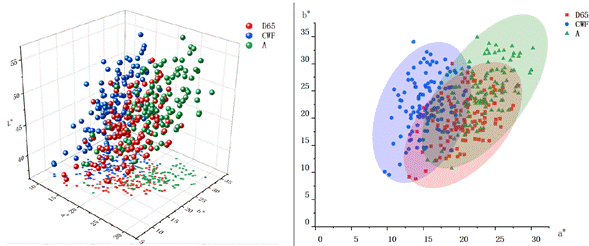
Figure 6 L*a*b* uniform color space system and a*b* chromaticity diagram showing red jadeite under D65, CWF and A light sources.
Compared with D65 and CWF light sources, the chroma of sample is higher under A light source (Figure 6). Meanwhile, sample under D65 light source is generally red, and sample under CWF light source is commonly orange, which agrees with the color perception under naked eyes.
The influence of spectrum on the jadeite color
Comparison of the theoretical values of spectrum of D65, CWF and A light sources (Figure 7) suggests that the curve under A light source is a generally inclined straight line. The spectral radiation of red zone is the strongest in the visible light region with color-rendering index (Ra) up to 92.39. Importantly, the input of orange-red color makes it suitable for illuminating red jadeite (Guo, Zong, Qi, Zhang & Wang, 2018c). The spectrum curve under D65 light source is uniform in green, yellow and red zone with the highest peak in the blue-green zone at 480 nm. The Ra (80.02) is lower than that of A light source, and the spectrum curve is uneven, showing that its illuminance on red jadeite is worse than A light source. Generally, both standard A light source and standard D65 light source are high quality color-rendering light source. The spectrum curve of CWF light source is generally sharp with peaks at 440 nm and 540-580 nm, which is unsuitable to illuminate jadeite red.
The color temperature of A light source (2856K) is lower than that of D65 light source (6504K), and its energy in the long-wave red zone is obviously higher than that in the short-wave blue-purple zone with overall light color of yellowish as a whole. The energy distribution of D65 light source in the range of 360 nm to 780 nm is more uniform than that of A light source, and the relative spectrum of D65 light source is close to that of sunlight (Guo, 2016a, 2016b). Therefore, the light color of D65 light source is closest to that of natural sunlight with no other obvious hues, which can better express the object color.
Ten red jadeite samples were randomly selected to be observed by naked eye and be simulated by computer, and the color difference was calculated using formula (3). The result confirms that L* and C* of the samples are the highest under A light source, a good indicator of brighter color. The samples under CWF light source are generally dark yellow-green tone, and color under D65 light source is closer to the red of the jadeite observed under sunlight (Table 2).
Two-way analysis of variance
Since the light source and sample are two independent factors determining the jadeite appearance, the influence of light source and sample on their color index is determined through two-way analysis of variance via SPSS software (Table 3).
Table 3 Two-way analysis of variance of different light sources and samples on red jadeite
| Difference source | ||||||
|---|---|---|---|---|---|---|
| Samples | light source | |||||
| L * | C* | ho | L * | C * | ho | |
| P | 0.000 | 0.000 | 0.000 | 0.000 | 0.000 | 0.000 |
| F | 100.174 | 39.036 | 15.578 | 768.864 | 920.394 | 714.955 |
The results show that the L*, C* and H0 are significantly governed by both light source and sample itself, because P << 0.01 suggests a significant level. F value can be used to represent the significance of difference in the variance analysis, e.g., F≥P is a good indicator of significant difference. The F values in the table 3 is higher than P values, verifying the conclusion that color index varies greatly with sample itself and light source (Wang, Li, You & Zhao, 2011).
F-statistic from the variance analysis can also be used to determine the difference of the impact of the sample/ light source on L*, C* and ho values, specifically, the impact of sample can be summarized as: L*> C* >ho, while the impact of light source can be described as following: C* > L* >ho.
One-way ANOVA
It is essential to conduct the one-way ANOVA to specify the light source transformation that has a great influence on color index (China National Bureau of Technical Supervision, 2001, 2004; Cha & Lee, 2009).
The P > 0.05 was used to confirm homogeneous variance in the homogeneity test of variance, where the LSD post-comparison was employed because of its highest sensitivity. The P < 0.05 is an indicator of inhomogeneous variance, where Tamhane method was used to compare the data (Nayatani & Sakai, 2007; Shams-Nateri, 2009).
Table 4 Test of variance homogeneity of red jadeite with different light sources
| L* | C* | K | |
| P | 0.630 | 0.568 | 0.007 |
The PL*>0.05 and PC*>0.05 in the homogeneity test indicate that LSD post-comparison method should be used to analyze the influence of different light sources on brightness and chroma, while Ph0<0.05 suggests that Tamhane method is supposed to be used to analyze the influence of different light sources on the red tone.
The variance analysis (Table 5) shows that the brightness, color hue and chroma of red jadeite are significantly affected by changing light source. The P values of these parameters after changing light sources are <0.05, which illustrates that the light source can exert significant impact on brightness, color hue and chroma.
Table 5 One-way ANOVA of light source on red jadeite
| Calculation method | (I) light source | (J) light source | Averaged difference (I-J) | P value | |
|---|---|---|---|---|---|
| L | LSD | D652 | F22 | -1.36100 | 0.005 |
| F22 | A2 | -1.84292 | 0.000 | ||
| A2 | D652 | 3.20392 | 0.000 | ||
| C | LSD | D652 | F22 | 1.26300 | 0.044 |
| F22 | A2 | -6.81683 | 0.000 | ||
| A2 | D652 | 5.55383 | 0.000 | ||
| h0 | Tamhane | D652 | F22 | -11.43317 | 0.000 |
| F22 | A2 | 8.15092 | 0.000 | ||
| A2 | D652 | 3.28225 | 0.000 |
Impact of standard light source on brightness, color hue and chroma of red jadeite
Three light sources have weak influence on the brightness (Figure 8), while the brightness value under A light source is higher than that under D65 light source and CWF light source. Also, A light source can increase the brightness value, making samples brighter, since its light color tends to be orange-red because of higher energy at long wave (Figure 3).
Three light sources have great influence on the color hue that increases in an order: CWF light source, D65 light source and A light source. This can be explained by that, CWF light source, a cold and white light source in the United States, has a higher energy at wavelength of 550-620 with yellow and green tone. The red color is disturbed and the chroma value is reduced when the yellow-green light is superimposed on the red jadeite. D65 light source represents the average daylight with light distribution more uniform in all color light, so the red color of jadeite under D65 light source is more similar to that under sunlight, and the color displayed is more objective. As a color light, A light source has higher energy in a wide wavelength range with orange-red tone. The orange-red light can increase color value of the jadeite, making the red color more saturated.
Jadeite red has the largest tone angle under CWF light source, while D65 and A light sources can bring larger biases to samples with lower tone angle and smaller biases to samples with lower tone angle. Thus, color hue of red jadeite varies greatly with light sources. This is because the CWF light source has higher energy in the purple band, enabling the purple light to neutralize the yellow tone of the sample and make the tone angle larger. Orange-red light derived from A light source can make the color of the red jadeite more orange-red.
Summarily, D65 light source is suitable for the jadeite evaluation, A light source is suitable for exhibiting the red color of jadeite, which can be used to sale and display jadeite. The CWF light source can add more red tone to the orange-yellow jadeite, which can be used in special cases.
Color grading of red Jadeite
The light source has an important influence on the color grading of gemstones. As discussed above, the energy of D65 light source in the range of 360-780 nm is much more uniform than that of A light source and CWF light source, which is close to the relative light spectrum of the sunlight. Thus, light color of D65 light source is the closest to the natural sunlight with no obvious other hues, which can better reflect the object color. Therefore, we recommend D65 light source to be used for the color grading of red jadeite.
Three independent color parameters, e.g., L*, a*, b*, are used for cluster analysis based on the international grading scheme of gem color (Guo, 2017). Acceptably, the clustering performs best for the grading number 5 with uniform distribution of each category. Also, the Sig value of the clustering result is < 0.001 (Table 1), suggesting that a valid grading. Therefore, 120 red jadeite samples were classified into 5 categories. Fisher discriminant function was used to exam the clustering, corresponding discriminant functions:
The significance (Sig) of the five grading is < 0.001 with the accuracy of color data backdating of 100% (Table 6), confirming that the scheme is valid and feasible (Tang, Guo & Xu, 2018).
Table 6 Fisher's discriminant analysis ofjadeite-jade red color.
| (%) | 1 | 2 | 3 | 4 | 5 | Total |
|---|---|---|---|---|---|---|
| 1 | 100.0 | 0.0 | 0.0 | 0.0 | 0.0 | 100.0 |
| 2 | 0.0 | 100.0 | 0.0 | 0.0 | 0.0 | 100.0 |
| 3 | 0.0 | 0.0 | 100.0 | 0.0 | 0.0 | 100.0 |
| 4 | 0.0 | 0.0 | 0.0 | 100.0 | 0.0 | 100.0 |
| 5 | 0.0 | 0.0 | 0.0 | 0.0 | 100.0 | 100.0 |
Currently, high-quality red jadeite is characterized by pure color, bright and uniform distribution, thus, C* and L* were used to evaluate color. As we know, high lightness makes the jadeite bright. Thus, with the same chroma, jadeite with middle lightness is regarded as high quality.
Consequently, jadeite with hue range of 22.64-57.66°is divided into five levels, including Fancy vivid, Fancy deep, Fancy intense, Fancy dark and Fancy, respectively. A 3D model of red jadeite is established accordingly (Figure 4), specifically, the L* of Fancy Vivid ranges from 35 to 47, C* ranges from 30 to 40; the L* of Fancy Deep ranges from 47 to 53, the C* ranges from 30 to 40; the L* of Fancy Intense ranges from 35 to 44, the C* ranges from 24 to 30; the L* of Fancy Intense ranges from 44 to 53, the C* ranges from 24 to 30; and the L* of Fancy Intense ranges from 35 to 53, the C*chroma ranges from 15 to 24 (Pan et al., 2019).
Conclusion
Conclusions were given based on comprehensive analysis:
(1) Fe 3+ is the main chromogenic mineral of red jadeite. The Fe content has negative correlation with the tonal angle, and the color of red jadeite positively correlates with the hematite content.
(2) D65 light source, A light source and CWF light source can exert great influence on the brightness, color hue and chroma of red jadeite. The light color of D65 light source distributes more uniformly, allowing red color ofjadeite more objective and more similar to that under sunlight, which is suitable for the jadeite evaluation. A light source is suitable for exhibiting the red color ofjadeite, which can be used to sale and display jadeite. The CWF light source can add more red tone to the orange-yellow jadeite samples, which can be used in special cases.
(3) K-Means clustering analysis and Fisher discriminant analysis were used to determine the color from best to worst under the D65 standard light source (the most suitable light source forjadeite color grading): Fancy vivid, Fancy deep, Fancy intense, Fancy dark, Fancy. The L* of Fancy Vivid ranges from 35 to 47, C* ranges from 30 to 40; L* of Fancy Deep ranges from 47 to 53, the C* ranges from 30 to 40; L* of Fancy Intense ranges from 35 to 44, C* ranges from 24 to 30; L* of Fancy Intense ranges from 44 to 53, C* ranges from 24 to 30; and L* of Fancy Intense ranges from 35 to 53, C*chroma ranges from 15 to 24.













